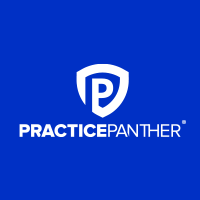Key performance indicators (KPIs) are essential to understanding how your law firm performs as a business. Despite being similar to other businesses in terms of profitability and certain practices, law firms are unique in terms of KPIs and billable and non-billable hours.
Are you curious about how your law firm is performing? Let’s take a deeper look at utilization rate, how it fits in with other KPIs, and how you can use this data to improve your law firm’s productivity and profitability.
What Is a Utilization Rate?
The utilization rate is a critical metric that gauges the daily number of billable hours dedicated by a specific lawyer. It is among the three key performance indicators (KPIs) necessary for understanding the effectiveness of your firm’s billing.
The utilization rate serves as a measure of both workload and productivity. It is computed by dividing the total billable hours by the number of hours worked on a daily basis.
Another significant KPI is the realization rate, which gauges the value potential of the work carried out. This rate is determined by dividing the number of billable hours invoiced by the total number of hours worked.
Lastly, the collection rate evaluates the firm’s ability to convert the work performed into revenue. This rate can be calculated by dividing the number of hours collected from clients by the number of hours invoiced.
The Importance of Your Firm’s Utilization Rate
For businesses that operate based on billable hours, it is crucial to assess whether the generated revenue adequately covers the overhead expenses. The utilization rate provides insights into the efficiency of your billing process, indicating whether you are effectively billing for the work performed.
Your utilization rate also offers insights into other business functions, such as your resource management. When you know where your firm stands right now, you can improve forecasting and resource optimization. It can show you if you have the capacity to take on new clients, whether you need to hire more people, whether your attorneys are spending too much time on non-billable work, and more.
How to Calculate Utilization Rate
As mentioned, the firm’s utilization rate is calculated by dividing the number of billable hours by the total number of hours worked.
For example, if a lawyer worked 60 hours in a week with 20 of them billable, you can divide 20 by 60, then multiply by 100 to get 33.33. The utilization rate is 33.33%. Another example is a 12-hour workday with five billable hours, which is a utilization rate of 41.67%.
Remember, the utilization rate is used to quantify productivity to improve your firm’s efficiency and make informed decisions — not to determine the value of your lawyers or staff.
Is There an Average Utilization Rate for Law Firms?
As of 2021, law firms had an average utilization rate between 27% and 37%. Keep in mind that this percentage varies by state.
In real-world numbers, the average lawyer collects around $7,498 for every $1,000 of billable work. Optimizing the realization and collection rates could allow these firms to collect up to 34% more revenue.
Generally, lawyer working hours average about 49.6 hours per week if they’re full-time. This also varies, but the average indicates that there’s not much room for more time spent on billable work.
According to legal business consultants, 1,650 billable hours a year is a reasonable goal for lawyers at small firms. Assuming 50 working weeks per year, that’s 33 billable hours each week. Divided by the number of hours worked each week on average, that’s a utilization rate of 66%, which is about double the industry average.
How Do I Increase My Firm’s Utilization Rate?
Do you want to reap the benefits of more efficient billing processes? Here’s how you can increase your firm’s utilization rate:
Track and Report on Your Utilization Rate
To address and improve your utilization rate, it is essential to have a clear understanding of its current status. Once you have calculated your firm’s utilization rate, establish a system to regularly track and record it.
Depending on your objectives, you can set up calendar reminders to monitor this rate on a weekly, semi-monthly, monthly, or quarterly basis. By consistently tracking your utilization rate, you can take proactive measures to optimize and enhance it over time.
Set Realistic Goals
Your firm’s utilization rate won’t change overnight, so it is crucial to set realistic goals when aiming to enhance your utilization rate. Instead, set attainable targets that align with your firm’s capacity and capabilities. Once you have defined your goals, configure tracking notifications to periodically assess your utilization rate and determine if you are progressing toward your intended objective.
For example, if your current utilization rate is 50%, setting a goal to increase it to 60% over the next three months would be a realistic target. You can then schedule regular check-ins to monitor your progress and make any necessary adjustments to ensure you stay on track to achieve your goal.
Automate How You Track Time
Utilization rate relies on the accuracy of how billable hours are recorded and tracked. Tracking time can be a time-consuming and error-prone process if your firm relies on manual methods.
If that applies to your firm, legal practice management software can help streamline the process. Set multiple timers by contact or matter, create time entries from calendar events, tasks, emails, and more to discover all your unbilled time, set automatic timers, and adjust time entries as needed.
Embrace Automation
Cloud-based law practice management software helps you automate many of the non-billable administrative tasks that consume your firm’s time. For example, with legal case management software, you can automate everything from client intake to invoices to legal document management, freeing your time to spend on billable work.
Delegate
Delegating can be difficult, especially for high-achieving lawyers. It’s essential to ensure that everything gets done correctly and efficiently. With legal practice management software and features like task management and custom tags, you can create workflows to assign tasks, track them, review the work in progress, and reassign them as needed.
Optimize Workflows and Processes
Streamlining your law firm’s processes, including client intake, billing, and legal case management, can dramatically improve your firm’s workflow and allow you to fit more billable hours into the day for a better utilization rate.
Outlook on the Utilization Rate
Your firm’s utilization rate is a key factor in your success. The more visibility you have into your billable and non-billable hours, the better you can identify gaps, find solutions to common barriers, and make meaningful improvements.




 />i
/>i

